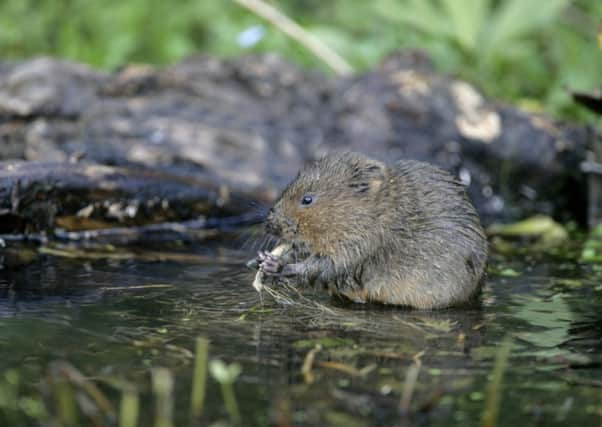Water voles return to Highlands after 20 year gap


Ecologists believe the reappearance of water voles at RSPB Insh Marshes in Strathspey is the result of work to eradicate American mink from large swathes of land in northern Scotland.
The small chubby rodents inspired the character of Ratty in the children’s novel ‘Wind in the Willows.
Advertisement
Hide AdAdvertisement
Hide AdDespite being the fastest declining mammal in the UK, RSPB officers say it looks like there is a strong colony of the creatures in the area.
Water vole numbers have dropped by 90 per cent in the UK over the last 40 years, with predation by American mink, a non-native species, and habitat loss mainly responsible for the decline.
They were wiped out along the main stem of the River Spey, with only a few holding on in isolated pockets in the hills and headwaters.
However, since 2011 the Scottish Mink Initiative has worked alongside organisations and landowners like the RSPB to eradicate mink from large parts of northern Scotland, including the Cairngorms National Park and Insh Marshes. This has allowed water voles to re-establish themselves in those areas.
In the first couple of years since efforts began around 30 mink were caught at Insh Marshes, and the trapping proved so effective that there have been only occasional sightings since then. No mink have been trapped on the reserve for several years.
This new population of water voles was discovered in July, during a survey at the site by RSPB Officer James Silvey, who said: “Water voles are extremely important mammals because they’re a really good sign of a healthy wetland environment and, rather unfortunately for them, they’re also an important link in the food chain.
“It’s great to see them returning to Strathspey and we are hopeful this population will go from strength to strength.
“However, we have to remain vigilant to ensure that mink remain absent from the area. RSPB Scotland will continue to support the Scottish Mink Initiative in its efforts to remove mink from as much of the site as possible.
Advertisement
Hide AdAdvertisement
Hide Ad“People in the area can help protect water voles too, by looking out for them and reporting any sightings to us so we can monitor their populations.”
Hebe Carus, the RSPB’s Futurescapes Officer for the Cairngorms, said: “The return of the water vole to Insh Marshes is great news and all the staff and volunteers on the reserve are delighted.
“Concerted efforts across the Cairngorms National Park to remove the mink have allowed the water voles to re-establish themselves, and it just shows that landscape-scale conservation activity, involving willing landowners and other partners, can be really effective in achieving gains for wildlife.”